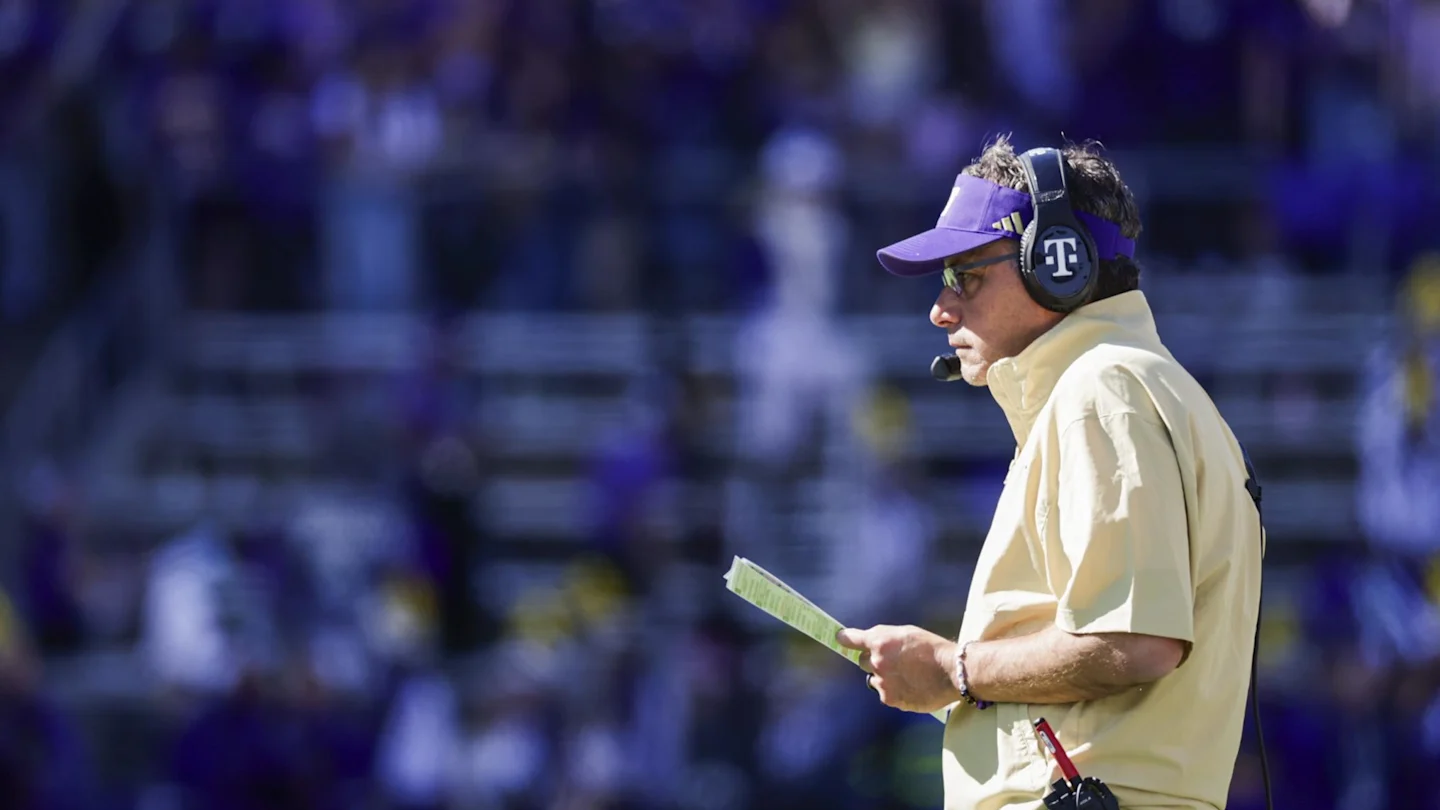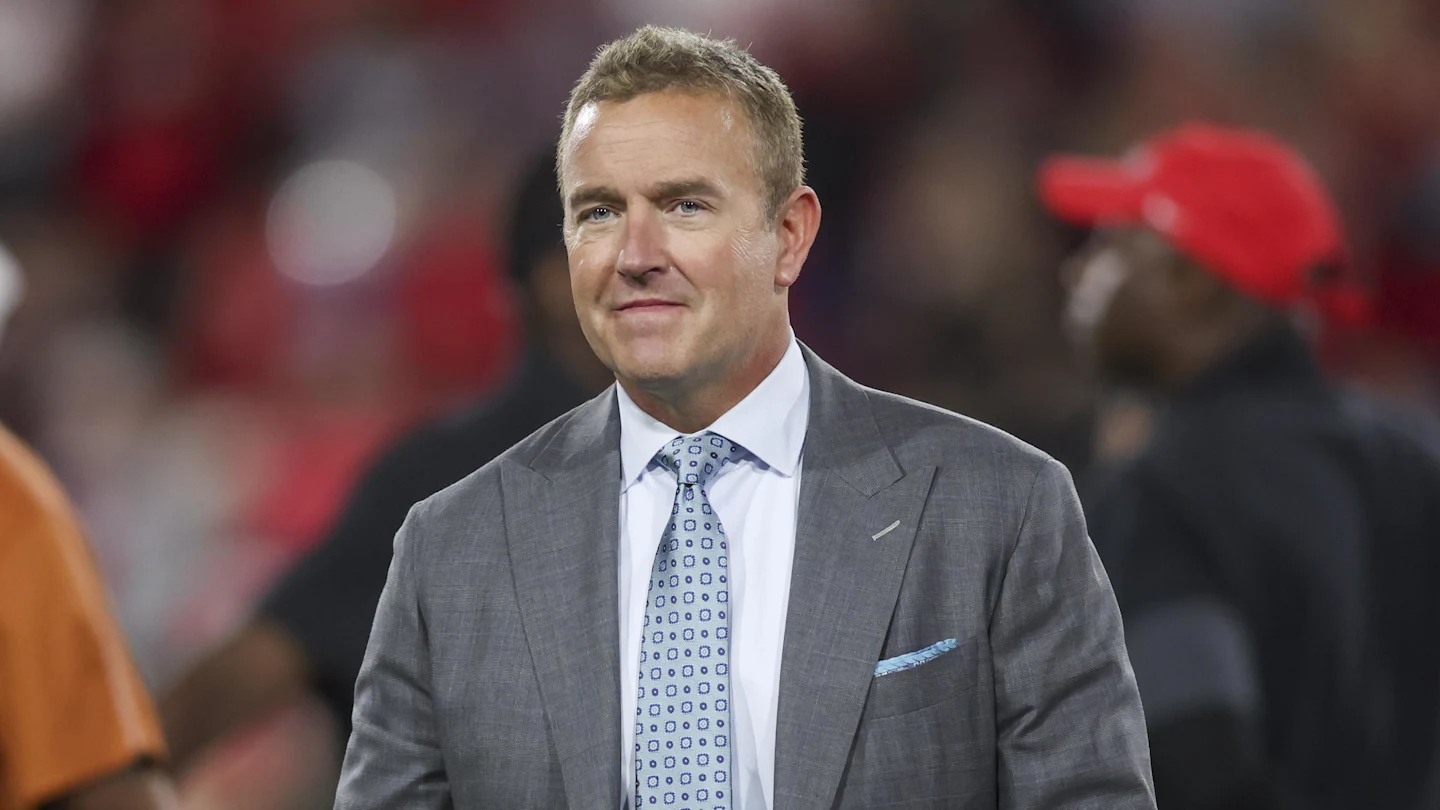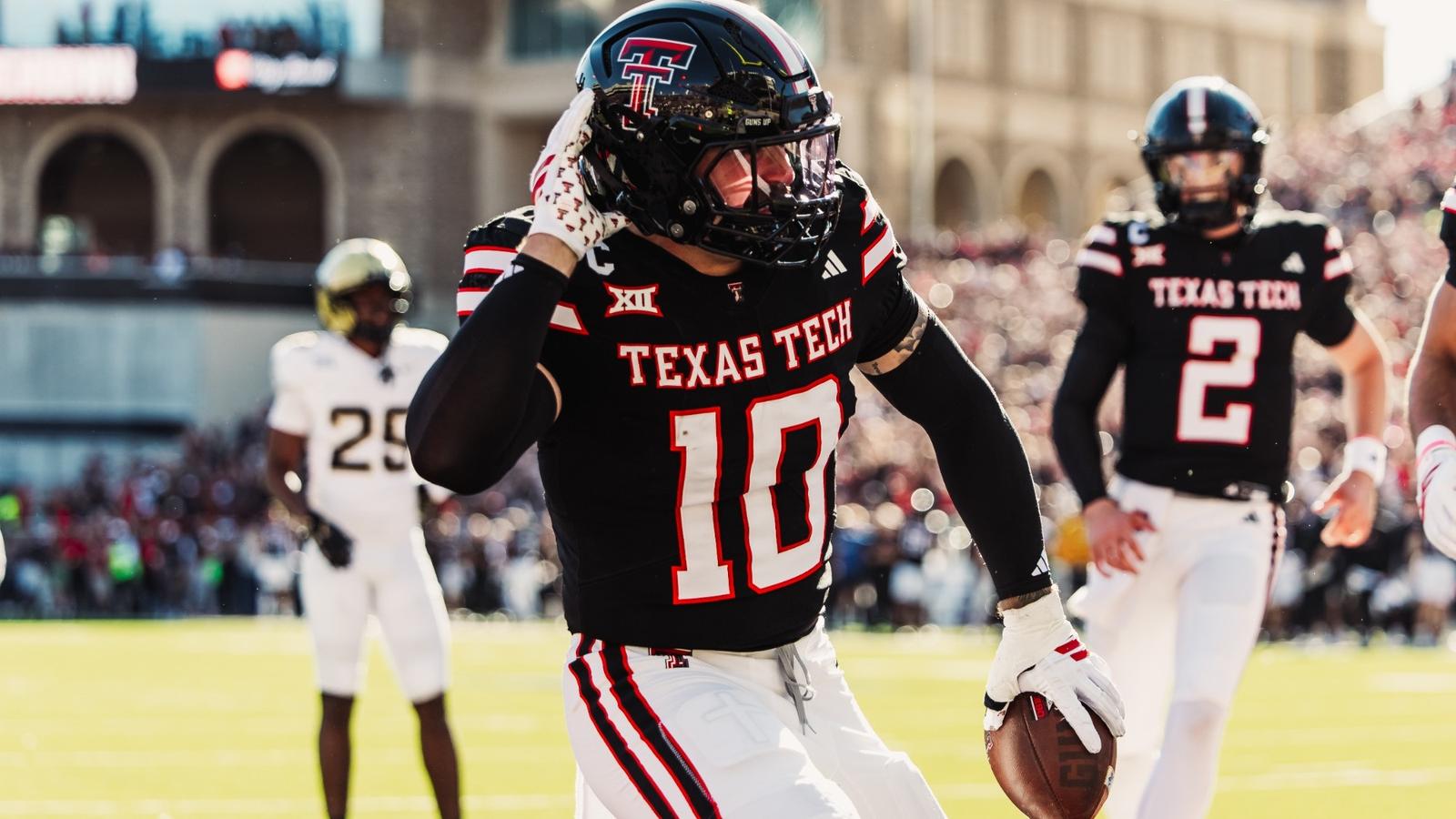NIL
Direct Pay, NIL Rules, Roster Limits, and a Cap

A new chapter in college athletics has officially begun.
On Friday, Judge Claudia Wilken approved a deal that permits schools to directly pay their student-athletes. Previously, athletes earned money through third-party NIL deals, some of which were outrageously expensive. Athletes can still land NIL deals, but for any payment of $600 or more, the deal will need to be approved through a clearinghouse, named NIL Go, which will be run by Deloitte, on behalf of the College Sports Commission. Approvals/rejections of deals are expected to be determined in roughly 24 hours.
For the 2025-26 sports season, schools will be operating with a $20.5 million cap, which will increase each year by at least 4%. It is up to each school to decide how that money will be divided up amongst its programs, but most Division I schools will spend the majority of their money on football and men’s basketball, of course.
In previous months, West Virginia athletic director Wren Baker has stated on numerous occasions that he felt confident that WVU would be at or near the full revenue share, which will help them be competitive. Being at the cap each year will be a new challenge for Baker and his fellow ADs. Falling way short will put those schools at a serious disadvantage.
As far as the football roster is concerned, yes, rosters are shrinking. Teams will be capped at 105 players, all of whom can be on scholarship, although it’s unlikely that all 105 will be. Rich Rodriguez did get his wish, however, in that players who were on a 2024-25 roster can be grandfathered in, allowing a team to surpass the 105 limit until said player(s) eligibility is exhausted.
MORE STORIES FROM WEST VIRGINIA ON SI
Steve Sabins Calls Bullpen Near Clemson’s ‘Drunk Frat Guys’ a ‘Bogus’ Setup
Steve Sabins Reveals West Virginia’s Starting Pitcher for Game 1 vs. LSU
West Virginia Governor Patrick Morrisey Accepts Wager from Louisiana Governor Jeff Landry
Flip Alert? Recently Committed Offensive Lineman Still Plans to Take WVU Visit
NIL
$54 million college football coach now favored to be next Michigan head coach

Dillingham Out?
As the ripples of college football’s initial coaching carousel were starting to subside, here it goes again. Michigan was apparently closing in on Arizona State’s Kenny Dillingham as its next coach, but one of Lee Corso’s truisms came roaring back: not so fast, my friend. Dillingham is now rumored to be signing an extension at Arizona State, which means that the Michigan search will continue.
DeBoer A Possibility?
Other rumors with Michigan have centered around Alabama coach Kalen DeBoer. That’s convenient timing, as DeBoer himself is in jeopardy of a fourth loss in a second consecutive season at Alabama. It’s safe to say, as Paul Finebaum asserted recently, that Alabama’s CFP game with Oklahoma could deeply impact DeBoer’s future plans. If DeBoer did leave Alabama, the resulting coaching carousel fallout would likely be massive across the entire sport.
A New Favorite
But a new favorite is jumping thorough the Kalshi prediction market. Washington coach Jeff Fisch has leaped to a 37% chance to take the Michigan job as Dillingham fell from an overwhelming favorite to under 10% chances. Fisch is finishing the second year of a $54 million contract for seven years that he signed with the Huskies before the 2024 season.
Fisch’s Resume
A renowned offensive mind, Fisch graduated from the University of Florida and has climbed the offensive coaching ladder since. He did coach defense briefly with the NFL’s Houston Texans, but he’s otherwise worked on offensive with a bevy of college and pro teams. He’s been the offensive coordinator at Miami, with the Jacksonville Jaguars, and at UCLA.
Fisch rose to prominence in his first head coaching job at Arizona. His Wildcat teams climbed from 1 to 5 to 10 wins in his three seasons there. Since taking over Washington, Fisch is now 14-11 and has taken the Huskies to two bowl games.
Michigan’s Dilemma
Michigan seemed to be in good shape with Sherrone Moore after the departure of Jim Harbaugh to the NFL, but the events of the last week left the Wolverines suddenly without a coach and at a point in the coaching carousel where many of the biggest targets (Lane Kiffin, James Franklin) and even the top secondary targets (Jon Sumrall, Alex Golesh) have already been hired.
Given the uncertainty around the Michigan program, Fisch might make sense simply as one of the quicker hires possible. With Washington preparing for the LA Bowl this evening, Fisch recently reiterated his plan to coach the Huskies in 2026. That said, the prediction market is obviously not quite buying in on that plan.

NIL
Trump calls NIL a ‘disaster’ for college sports and Olympics

NEWYou can now listen to Fox News articles!
When President Donald Trump hosts an event in the Oval Office and opens things up to questions from the media, as he did on Friday while hosting members of the 1980 Miracle on Ice team, you get a lot of dumb questions.
I mean, I get that opportunities to ask the president a question are at a premium, but with Jim Craig and Mike Eruzione on hand, is that the time to ask about Venezuela?!

President Donald Trump gestures to the crowd before the start of the NFL Super Bowl 59 football game between the Philadelphia Eagles and the Kansas City Chiefs, Sunday, Feb. 9, 2025, in New Orleans. (AP Photo/Ben Curtis)
Anyway, at least one member of the press asked a question that made a lot of sense, and it had to do with NIL.
CLICK HERE FOR MORE SPORTS COVERAGE ON FOXNEWS.COM
That’s fitting, as back when the Miracle on Ice team played, the Olympics were strictly for amateurs, and most of the team was plucked from various collegiate rosters.
Had they played 40-plus years later, they may have been rolling in some of that NIL dough.
But, as the president noted — and Sen. Ted Cruz would agree with — the current state of NIL is simply not sustainable and could cause serious damage to college athletics, and even the Olympics.

U.S. President Donald Trump, joined by the 1980 U.S. Olympic men’s ice hockey team, holds up a bill to honor the team in the Oval Office of the White House on Dec. 13, 2025 in Washington, D.C. (Anna Moneymaker/Getty Images)
TRUMP WARNS COLLEGE SPORTS ARE IN ‘BIG TROUBLE’ IN CRYPTIC POST
“I think that it’s a disaster for college sports,” President Trump said. “I think it’s a disaster for the Olympics, because, you know, we’re losing a lot of teams. The colleges are cutting a lot of their — they would call them sort of the ‘lesser’ sports, and they’re losing them like at numbers nobody can believe. They were really training grounds, beautiful training grounds, hard-working, wonderful young people. They were training grounds for the Olympics.
“And a lot of these sports that were training so well would win gold medals because of it. Those sports don’t exist because they’re putting all their money into football. And by the way, they’re putting too much money into it, into football.”
President Trump noted that the top-performing athletic programs aren’t making enough money to sustain themselves, given the rate at which they’re paying highly sought-after players.

U.S. President Donald Trump stands with Ohio State Head Coach Ryan Day as he welcomes the 2025 College Football National Champions from Ohio State University to the White House during a ceremony on the south lawn in Washington, District of Columbia, on April 14, 2025. Ohio State won the national championship by defeating Notre Dame 34-23. (Win McNamee/Getty Images)
CLICK HERE TO GET THE FOX NEWS APP
“They’re putting all of their money in, and I know something about it,” President Trump said. “They will not be able to stop. You have a college president [saying], “I’m telling you, sir, we give a guard $7 million, we’re going to win the national championship,’ and they’ll give them seven, then they won’t win it.
“And even if they do win it, colleges cannot afford to be paying the kind of salaries that you’re hearing about.”
Follow Fox News Digital’s sports coverage on X, and subscribe to the Fox News Sports Huddle newsletter.
NIL
Kirk Herbstreit honors Arch Manning with major college football award

The 2025 college football regular season is over and the time is now for ESPN analyst Kirk Herbstreit to hand out his personal awards for the year ahead of what’s sure to be an entertaining postseason. He calls them the Herbie Awards, which are given out to worthy somebodies across various categories.
For instance, you can go read who Herbstreit selected as his Offensive Player of the Year right here. But one of the awards Herbstreit came up with was called the Redemption Player of the Year, which he said is intended to award a guy who bounced back from an injury, a poor season the year before, or even someone who showed extraordinary growth from Week 1 to Week 14.
He nominated three players for the honor: Texas quarterback Arch Manning, Alabama linebacker Deonte Lawson, and Notre Dame defensive end Boubacar Traore. As you should already know, Herbstreit opted to give the Redemption Player of the Year honor to the most famous name in college football, Arch Manning, for navigating a difficult year into a very positive finish for he and the Longhorn program.
“I think he came in with unrealistic expectations,” Herbstreit said of the Texas QB. “When this season started, people were talking about, ‘He’s going to win the Heisman Trophy. He’s better than Payton. He’s better than Eli. He’s better than his grandpa. He’s going to win a national championship. It’ll be the first pick next year in the draft.'”

Obviously, the season didn’t turn out that rosy. For Herbstreit, it was seeing Manning undergo the ego hit and the piling on of critics but still turn his season around to finish so strong that impressed him so much.
“When that didn’t pan out in the first half of the season, people were very, very critical,” Herbstreit continued. To his credit, he blocked all of that out. Didn’t take any of it personally. If anything, I think it motivated him to go out and help his teammates win games. And I was really happy for him enduring that and coming out on the other side.”
In his first year as the full-time starter, Manning finished with just under 3,000 total passing yards while guiding Texas to a solid 9-3 season given the harsh schedule they were saddled with. After some early-season offensive struggles and two losses in their first five games, Manning and the Longhorn offense hit a groove as the Longhorns won six of their last seven.
Across Texas’ final five games, Arch Manning threw for 300+ yards in three wins against Mississippi State, Arkansas and Vanderbilt, and then led a 27-point outing and scored two touchdowns, one passing and one rushing, to lead Texas over rival Texas A&M.
More on College Football HQ
NIL
Rodriguez collects Bednarik Award for fifth national honor

LUBBOCK, Texas – Texas Tech senior linebacker Jacob Rodriguez collected his fifth national award this season Friday evening as he was tabbed the winner of the Bednarik Award during the College Football Awards Show live on ESPN.
Rodriguez is the first Red Raider in program history to win the Bednarik Award, which is presented annually by the Maxwell Football Club to the nation’s top defensive player. The Bednarik Award selected Rodriguez over Ohio State safety Caleb Downs and Texas A&M defensive end Cashius Howell.
With the addition of the Bednarik Award, Rodriguez is now the winner of the Butkus Award (nation’s top linebacker), the Bronko Nagurski Trophy (nation’s top defensive player), the Lombardi Award (nation’s top lineman or linebacker) and the Pony Express Award (nation’s top duo with David Bailey) this season alone. He is the third player in history to win the Butkus Award as well as the Nagurski Trophy and Bednarik Award in the same season, joining Miami’s Dan Morgan (2000) and Notre Dame’s Manti Te’o (2012). Rodriguez joins Te’o as the only players to also win the Lombardi Award.
Rodriguez, who was also tabbed a first team All-American by the Walter Camp Foundation during the ESPN broadcast, has bolstered one of the nation’s top defenses, leading the Red Raiders to their first Big 12 title in program history this season and their first appearance in the College Football Playoff. The Red Raiders enter a potential matchup with either No. 5 Oregon or No. 12 seed James Madision at 12-1 overall, marking the most wins in program history.
Rodriguez has now led Texas Tech to four-consecutive bowl appearances during his career after going from a scholarship quarterback at Virginia, to walk-on linebacker with the Red Raiders and now a national award winner. He was joined during the ESPN College Football Awards Show by his parents, Joe and Ann Rodriguez, and his wife, Emma.
Rodriguez enters bowl season as the FBS leader with seven forced fumbles and ranks among the top-15 players nationally with 117 tackles. He is the first FBS player since 2005 to record at least five forced fumbles, two fumble recoveries and four interceptions all in the same season. His impact has bolstered a Texas Tech defense that leads the nation with 31 takeaways and ranks third nationally in scoring defense at 10.9 points per game. Rodriguez was responsible for nine takeaways himself — all in Big 12 play – thanks to his ability to punch the ball out and also read the quarterback in coverage.
Rodriguez is currently the highest-rated player in all of college football, according to Pro Football Focus, grading out at 93.3 overall so far this season. He is the top-rated player in the country in terms of rush defense, receiving a 95.5 grade in that area for a Red Raider defense that is easily the nation’s best in stopping opponents on the ground. Texas Tech is giving up only 68.5 rushing yards a game thanks to Rodriguez, who also ranks fifth nationally in coverage with a 92.3 grade.
Established in 1995, the Chuck Bednarik Award is one of the most-prestigious honors in college football, awarded annually to the most outstanding defensive player. This accolade recognizes exceptional talent, tenacity and impact on the defensive side of the ball. The award is named in tribute to Chuck Bednarik, a revered figure in football history known for his remarkable career as a linebacker.
NIL
$15 million college football coach sues Big Ten school over buyout dispute

It’s a darn tootin’ time to be a lawyer in the college sports space, eh? As college footbal programs all around the country change coaches, hand out buyouts and sign ridiculous new contracts, even some former coaches are trying to get what’s theirs.
Just this week, as the dust seemed to be settling nation-wide on a chaotic spin of the coaching carousel this fall, we had Sherrone Moore’s firing at Michigan and the ugly fallout from that ordeal, plus the somewhat surprising retirement of legendary Utah Utes head coach Kyle Whittingham, setting up a changing of the guard at Utah plus a brand new search in Ann Arbor — which may kickstart a whole other chain of coaching searches.
Amid all this talk of contracts and big buyout money, one former Nebraska coach, Scott Frost, has come out of the woodwork to sue Nebraska, alleging the ‘Huskers have shorted him on the agreed-upon buyout payments. Local news outlet WOWT had the news Friday evening:
“Former Nebraska football coach Scott Frost filed a lawsuit Friday, accusing the school of breaching his contract and mishandling millions in buyout payments and taxes,” they wrote. “In the complaint filed in Lancaster County District Court, Frost claimed the university wrongly stopped payments he said are owed for 2025 and 2026 under his employment contract. Frost is seeking a court order confirming Nebraska’s right to reduce those payments and seeking at least $5 million in damages.
Scott Frost was fired on the heels of a 10th consecutive loss in a one-possession game, this time to Georgia Southern, 45-42, following a poor start to the team’s season in 2022. At the end of that season, Nebraska placed former Baylor and Carolina Panthers coach Matt Rhule at the helm of the program, and he’s guided it ever since.
Scott Frost buyout details

When Frost was fired in September of 2022, his buyout came out to roughly $15 million, and that number would have been split in half had the Cornhuskers merely waited a few weeks, until Oct.1, to officially pull the trigger. Now, per Yahoo Sports, the argument centers on some tax mumbo jumbo.
“According to the filing, Nebraska told Frost in December 2022 that it planned to count the projected value of his 2025 and 2026 buyout payments as income on his W-2 for that year,” wrote Jim Recalto for Yahoo. “Frost argues that move was improper and left him with a $1.7 million tax liability for money that had not been paid.”
Yahoo adds: “Frost says those future payments were guaranteed under his contract and could not be reduced or taken away. However, he also claims the university said in the same email that the payments could later be adjusted, without explaining how or why.”
Seek out your local CPA for a better read on this situation, but from the bird’s eye view, it appears that Frost had future buyout payments lumped into the same year he was fired, which definitely heavied his tax burden vs. taken the payments over several years. Then, the university tried to adjust or change those payments they had already lumped onto the W-2 which Frost had been taxed for.
Essentially, the man was taxed on money he hadn’t yet received, and then when it came to receiving said money, the process for getting it was changed around despite the fact Frost was already liable for the money. At least, that’s how Frost’s side puts it. Nebraska may have some explaining to do here.
More on College Football HQ
NIL
Meet The Two Oregon Freshmen Ready To Make Ducks History Under Dan Lanning

The Oregon Ducks have one of the best running back duos in college football. And they are only freshmen.
Jordon Davison and Dierre Hill Jr. provided the Ducks’ with an electric one-two combo behind starting running back Noah Whittington. The freshmen combined for over 1,000 yards and 15 touchdowns during the regular season.
Freshmen Bursting Onto The Scene

It’s been a year to remember for the Ducks’ ground game this season. Whittington have provided a stable presence in the backfield in the 10 games he’s played in. In the regular season, he rushed for 774 yards and six touchdowns.
Davison ran for 535 yards and 13 touchdowns, meanwhile Hill accumulated 481 yards and four touchdowns.
The two became stars seemingly overnight as coming into the season, it looked like they would be buried on the depth chart with Makhi Hughes, Da’Juan Riggs, Jayden Limar, and Noah Whittington all ahead of them. But the duo stayed consistent and eventually earned carries early in season and both evolved into bigger roles as the year progressed.
At this rate, Davison and Hill Jr. are poised to make history in Lanning’s system and dominate in the Big Ten for years to come. Former Ducks running back Royce Freeman set the record with 18 rushing touchdowns in his true freshmen season, but Davison is close behind with 13.
Thanks to Oregon’s depth at the position, the single-season rushing record is far from reach. LaMichael James owns the freshman record with 1,546 yards in a single season, while Freeman holds the outright record with 1,836 rushing yards in a season.
Former Ducks star Kenjon Barner set Oregon’s single-game rushing record against USC, rushing for 321 yards in the Los Angeles Memorial Coliseum in 2012. Could either Hill or Davison catch that number?
Jordon Davison on his Relationship With Dierre Hill Jr.
Davison opened up about how he immediately clicked with Dierre Hill Jr.
“It’s kind of crazy, because coming in, they was like, who do I want to play with? And we was like watching each other’s film, and it was a couple backs, and I actually chose Dierre. And his film stuck out to me. And then we was connecting before we got here, and then as soon as we got here, it just clicked, like, that’s my right-hand man. People probably think like, it’s just on the field, but we together every day, off the field, all the time.”
“We’re kind of like opposite personalities. I’m a bit more quieter. He’s a loud one, but we complement each other very well. And I just love Dierre. I love being around him. I love being around everybody in the running back room. They all brought me in as a brother, and they all helped me grow as a player and a person,” Davison continued.
Oregon’s History Of Running Back Duos

It shouldn’t come as a surprise to the Ducks having another powerful running back duo. Over the course of Dan Lanning’s tenure at Oregon, he has always had at least one 1,000-yard rusher and one 500-yard rusher. But it looks like that trend will end this year with the emergence of Davison and Hill in addition to Whittington.
Lanning’s first year at Oregon in 2022 saw the emergence of Bucky Irving and Whittington. Irving ran for 1,058 yards and Whittington rumbled for 779 yards. The following season in 2023, it was Irving with 1,180 yards and Jordan James with 759 yards as Whittington nursed a torn ACL. Last year in 2024, James went for 1,267 yards and Whittington ran for 540 yards.
Add in Oregon running back coach Ra’Shaad Samples, who is among the best position coaches in the country, and it looks likely the trend of having two great running backs will continue.
MORE: Oregon’s Breakout Freshman Emerges As Potential X-Factor For The Playoff
MORE: Why Cleveland Moving On From Dillon Gabriel Could Be a Blessing in Disguise
MORE: Four-Star Safety Makes Recruiting Announcement With Oregon, Alabama, Ohio State
SIGN UP FOR OUR NEWSLETTER HERE!
Finding Recent Comparisons

Having multiple starting-caliber running backs isn’t something that is extremely uncommon in college football, just take a look at Notre Dame and Penn State for example.
The Fighting Irish have Jeremiyah Love and Jadarian Price. Love has garnered most of the attention this season and rightfully so as he is a Heisman Trophy finalist after rushing for 1,372 yards and 18 touchdowns. But Price is no slouch himself. He ran for 674 yards and 11 touchdowns playing as the No. 2 back for Notre Dame.
At Penn State, Kaytron Allen became the program’s all-time leading rusher this year. He ran for 1,303 yards and 15 touchdowns, while Nicholas Singleton ran for 549 yards and 13 touchdowns.
The blueprint is there for Hill and Davison to reach national recognition. Considering they are only in their first season of college football, the Ducks’ freshmen could potentially become their best running back duo in program history.
Recommended Articles
-

 Rec Sports3 weeks ago
Rec Sports3 weeks agoFirst Tee Winter Registration is open
-

 Rec Sports2 weeks ago
Rec Sports2 weeks agoFargo girl, 13, dies after collapsing during school basketball game – Grand Forks Herald
-

 Motorsports3 weeks ago
Motorsports3 weeks agoCPG Brands Like Allegra Are Betting on F1 for the First Time
-

 Motorsports3 weeks ago
Motorsports3 weeks agoF1 Las Vegas: Verstappen win, Norris and Piastri DQ tighten 2025 title fight
-

 Sports3 weeks ago
Sports3 weeks agoTwo Pro Volleyball Leagues Serve Up Plans for Minnesota Teams
-

 Sports3 weeks ago
Sports3 weeks agoSycamores unveil 2026 track and field schedule
-

 Sports3 weeks ago
Sports3 weeks agoUtah State Announces 2025-26 Indoor Track & Field Schedule
-

 Motorsports2 weeks ago
Motorsports2 weeks agoJo Shimoda Undergoes Back Surgery
-

 Motorsports2 weeks ago
Motorsports2 weeks agoRedemption Means First Pro Stock World Championship for Dallas Glenn
-

 Sports3 weeks ago
Sports3 weeks agoTexas volleyball vs Kentucky game score: Live SEC tournament updates
























